Java Exploits on the Rise
By: Stephanie Chaumont
Publication: The Community Banker, Winter 2012
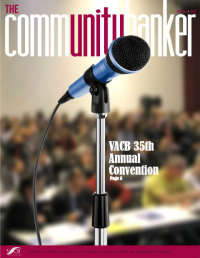 Last month, Kaspersky Lab reported that Java is the target for more than half of all malware exploit attempts. Combine that with the fact that one very common audit finding is to encounter older versions of Java on a bank's network, and you have a recipe for disaster.
Last month, Kaspersky Lab reported that Java is the target for more than half of all malware exploit attempts. Combine that with the fact that one very common audit finding is to encounter older versions of Java on a bank's network, and you have a recipe for disaster.
I may need to clarify something about older versions of Java. Java does not work like Microsoft. When Microsoft discovers a vulnerability, they release a patch for you to install on your existing platform, so it's possible that you have an older version of Microsoft that is completely patched. When software companies like Adobe and Oracle (Java) discover a vulnerability, the patch is released in a new version of the product. That's why you constantly see new versions available…they are not usually released for the purpose of adding some cool new feature. They are most likely released to fix a security issue.

 On September 17, 2012, the Federal Bureau of Investigation (FBI), the Financial Services Information Sharing and Analysis Center (FS-ISAC), and the Internet Crime Complaint Center (IC3) released a joint fraud alert titled Cyber Criminals Targeting Financial Institution Employees Credentials to Conduct Wire Transfer Fraud. In the alert, they suggest recent reporting indicates a new trend in cyber attacks to compromise financial institution networks and obtain employee login credentials. In many cases, these attacks used spam and phishing emails to install keyloggers and Remote Access Trojans (RAT) to gain access to the employee's computer and subsequently to the bank network. The majority of victims targeted were small-to-medium sized banks or credit unions; however, the report adds a few larger banks have also been affected.
On September 17, 2012, the Federal Bureau of Investigation (FBI), the Financial Services Information Sharing and Analysis Center (FS-ISAC), and the Internet Crime Complaint Center (IC3) released a joint fraud alert titled Cyber Criminals Targeting Financial Institution Employees Credentials to Conduct Wire Transfer Fraud. In the alert, they suggest recent reporting indicates a new trend in cyber attacks to compromise financial institution networks and obtain employee login credentials. In many cases, these attacks used spam and phishing emails to install keyloggers and Remote Access Trojans (RAT) to gain access to the employee's computer and subsequently to the bank network. The majority of victims targeted were small-to-medium sized banks or credit unions; however, the report adds a few larger banks have also been affected.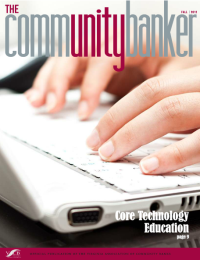 Lately, the terms "cloud computing" and "cloud-based" are being used to describe a wide array of technology products with varying service models. Because of this, it might seem the meaning of cloud computing is actually up in the air. On July 10th, 2012 the FFIEC Information Technology Subcommittee published some of the first regulatory guidance specifically addressing outsourced cloud computing. This new guidance defines cloud computing generally as "the migration from owned resources to shared resources in which client users receive information technology services, on demand, from third-party service providers via the Internet 'cloud.'" This is a broad definition and it's likely most banks are utilizing at least a few technology solutions would fall into the "outsourced cloud computing" category.
Lately, the terms "cloud computing" and "cloud-based" are being used to describe a wide array of technology products with varying service models. Because of this, it might seem the meaning of cloud computing is actually up in the air. On July 10th, 2012 the FFIEC Information Technology Subcommittee published some of the first regulatory guidance specifically addressing outsourced cloud computing. This new guidance defines cloud computing generally as "the migration from owned resources to shared resources in which client users receive information technology services, on demand, from third-party service providers via the Internet 'cloud.'" This is a broad definition and it's likely most banks are utilizing at least a few technology solutions would fall into the "outsourced cloud computing" category.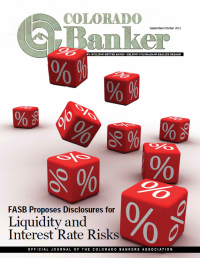 Earlier this year, just one hour before a bank was scheduled to educate their Board of Directors on the concerns of corporate account takeover, the bank's call center received a call from one of their customers asking why the bank's Internet Banking website was down. When the customer attempted to connect, they received a message stating the "Site was down for repair, check back in 24 hours." The bank verified the site was up, and upon further investigation found the customer's machine had been compromised and fraudulent transactions were being created.
Earlier this year, just one hour before a bank was scheduled to educate their Board of Directors on the concerns of corporate account takeover, the bank's call center received a call from one of their customers asking why the bank's Internet Banking website was down. When the customer attempted to connect, they received a message stating the "Site was down for repair, check back in 24 hours." The bank verified the site was up, and upon further investigation found the customer's machine had been compromised and fraudulent transactions were being created.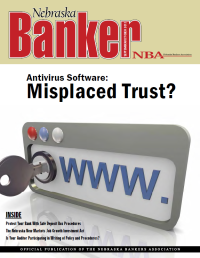 Antivirus software has long been accepted as the cornerstone of any healthy security program. As online security threats continue to rise and pose a significant risk to the financial industry, you have, no doubt, implemented many technical controls. Perhaps, in the back of your mind, you've thought if these controls failed, well, at least you have antivirus. Now, however, the discovery of the Flame virus earlier this summer has everyone wondering if their trust was poorly placed.
Antivirus software has long been accepted as the cornerstone of any healthy security program. As online security threats continue to rise and pose a significant risk to the financial industry, you have, no doubt, implemented many technical controls. Perhaps, in the back of your mind, you've thought if these controls failed, well, at least you have antivirus. Now, however, the discovery of the Flame virus earlier this summer has everyone wondering if their trust was poorly placed. One topic you might have overlooked for training this year is password security. Operating systems, web portals, and software applications have evolved in the realm of technical security measures, so that now it's rare to not see some form of easy-to-use password policy attached. You can easily enforce password length, complexity, and age restrictions for your bank's network; however, these restrictions are insufficient without password security training.
One topic you might have overlooked for training this year is password security. Operating systems, web portals, and software applications have evolved in the realm of technical security measures, so that now it's rare to not see some form of easy-to-use password policy attached. You can easily enforce password length, complexity, and age restrictions for your bank's network; however, these restrictions are insufficient without password security training. I attended a conference this week where I had the privilege of hearing a state banking examiner speak about corporate account takeover. One idea he expressed has stuck with me the last few days: "we have to make this a security issue, not a compliance issue..." How many of you have been struggling with the latest FFIEC supplement for Internet Banking? Are you feeling it's yet another compliance mandate? Is your biggest concern to please an examiner or provide the best security for your customers?
I attended a conference this week where I had the privilege of hearing a state banking examiner speak about corporate account takeover. One idea he expressed has stuck with me the last few days: "we have to make this a security issue, not a compliance issue..." How many of you have been struggling with the latest FFIEC supplement for Internet Banking? Are you feeling it's yet another compliance mandate? Is your biggest concern to please an examiner or provide the best security for your customers? Customer awareness and education on Internet banking security was a point of emphasis in the guidance published by the FFIEC on June 28th of 2011 titled Supplement to Authentication in an Internet Banking Environment. Increasing customer awareness of effective techniques for mitigating the risk of fraud should be a major part of your customer education program.
Customer awareness and education on Internet banking security was a point of emphasis in the guidance published by the FFIEC on June 28th of 2011 titled Supplement to Authentication in an Internet Banking Environment. Increasing customer awareness of effective techniques for mitigating the risk of fraud should be a major part of your customer education program.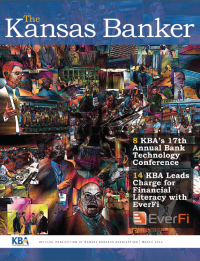 I've always been a fan of the underdog. I'll never get tired of any movie featuring an underdog or underprivileged sports team, dancer, speller, or contestant on India's Who Wants to Be a Millionaire. I cry every time even though I know they'll either win the big game or come in a very close second and be okay with the loss because they learned so much about themselves during the season…
I've always been a fan of the underdog. I'll never get tired of any movie featuring an underdog or underprivileged sports team, dancer, speller, or contestant on India's Who Wants to Be a Millionaire. I cry every time even though I know they'll either win the big game or come in a very close second and be okay with the loss because they learned so much about themselves during the season…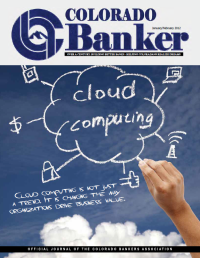 On June 28 of 2011, the FFIEC published a Press Release titled "Supplement to Authentication in an Internet Banking Environment." In the introduction of the supplement, they stated the FFIEC member agencies "have directed examiners to formally assess financial institutions under the enhanced expectations outlined in the supplement beginning in January 2012." The question is, is your financial institution in compliance with the new guidance? In this article, we will review the basic principles outlined in the guidance.
On June 28 of 2011, the FFIEC published a Press Release titled "Supplement to Authentication in an Internet Banking Environment." In the introduction of the supplement, they stated the FFIEC member agencies "have directed examiners to formally assess financial institutions under the enhanced expectations outlined in the supplement beginning in January 2012." The question is, is your financial institution in compliance with the new guidance? In this article, we will review the basic principles outlined in the guidance.